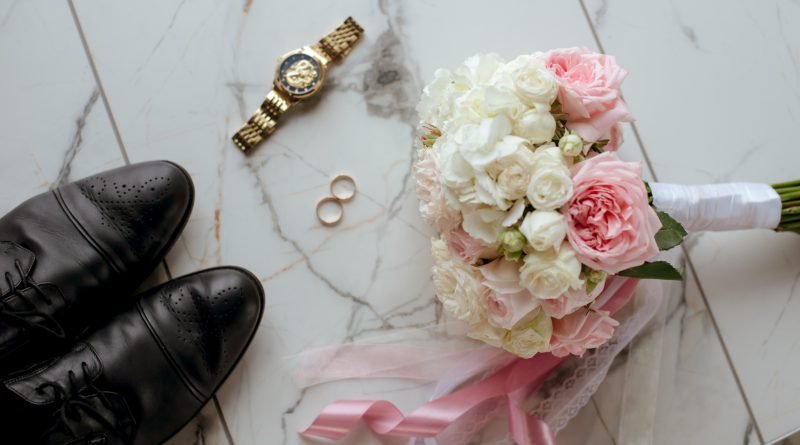Creating Your Dream Event on a Budget: Aisle Planner’s Guide

Most couples want to make sure that their wedding is everything they envisioned. But if you have a tighter budget, bringing that vision to life may seem like a challenge. Fortunately, you can become strategic aisle planners, allowing you to focus your efforts (and funds) in the right areas to make your dream a reality. Here’s how you can create your dream event on a budget.
Sit Down and Figure Out Your Budget
Before you take any other step, you need to sit down with your soon-to-be spouse and set a formal budget. Knowing the maximum amount you can spend is essential. Otherwise, you might dedicate too much money to some expenses, leaving you nothing for the other costs you’ll likely encounter.
Plus, knowing your budget makes future expense planning and tracking simpler. You can allocate funds by using estimates of how much you’d like to spend in each major expense category, such as attire, food, or flowers. Then, you’ll be able to save time when researching vendors, too, as you’ll know the price point you need to find, ensuring you focus on viable providers.
Speak with Your Partner to Identify Non-Negotiables
Usually, when couples think of their dream wedding, there are specific features that they have in mind. For example, there might be one venue you simply must have or a particular band you want to hire.
Essentially, you want to identify elements of your wedding that you don’t want to sacrifice. By doing so, you know where to focus your money to bring the critical parts of your vision to life. Then, you can focus on reducing your spending in less critical areas, allowing you to also stay on budget.
Be Flexible About the Date
Unless having a specific wedding date is a non-negotiable, being flexible about when your event happens can work wonders for your budget. Choosing less popular dates (such as weekdays over weekends) can make venues and various services less expensive.
For example, there are fewer couples looking to use event spaces or vendors for weddings occurring on Wednesdays than on Saturdays, so they may offer you better pricing. As a result, a higher-cost location or service provider may suddenly be affordable, or a moderately priced option may become relatively low-cost since you’re using a less popular date.
Use One Venue for the Ceremony and Reception
In many cases, choosing a single venue for your ceremony and reception can help you keep your costs down. While you may need to pay for more time at the single location, that usually costs less than paying for minimum time requirements at two venues. Plus, it lets you avoid transportation expenses related to getting people from one spot to the next, and it’s usually more convenient to manage.
Explore All-Inclusive Venues
At times, going with a venue that will handle every aspect of your event (or, at least, most of the major ones) can cost less than finding vendors for each feature of your wedding and reception. Plus, you don’t have to coordinate every detail yourself, as you’ll get support from representatives of the venue, so it simplifies planning. Since these usually involve a flat rate for the selected services, it also makes budgeting easier.
Avoid Paper Save-the-Dates and Invitations
While paper save-the-date cards or invitations may seem like a nice keepsake, they’re costly. Plus, you not only have to purchase the items, but you also have to deal with postage, and that can add up.
Instead, keep the cost down by going with digital alternatives. Online save-the-dates and invitations are easy to create and incredibly low cost. Plus, some services can manage your RSVPs for you while also connecting guests to your registry, allowing them to access hotel information, or ensuring they can review other critical details.
Be Smart When Selecting Colors
The colors you choose for your wedding can impact the cost of décor. Specific classic colors are generally widely available, so you can often get pieces for lower prices than if you choose less popular or custom colors.
For example, white, silver, and gold décor are usually incredibly easy to find, so consider using some of those for the basis of your color scheme. Then, pick an accent color that you can use for the occasional pop, preferably one that aligns with the season of your wedding, to avoid accessibility issues.
Rethink the Massive Wedding Cake
Wedding cakes can be spectacularly large, but when they are, the cost is typically high. Instead, consider going with a smaller wedding cake that can work for a cake-cutting ceremony and is appropriately sized for the main table. Then, use a sheet cake (that’s kept in the kitchen area) to serve guests. Since sheet cakes aren’t as complicated to make and the wedding cake is smaller, you can still feed everyone without breaking the bank.
Alternatively, you can forgo a traditional wedding cake entirely. Going with well-displayed cupcakes could work well, and it ensures that every guest gets the same portion. You could also skip cake altogether and go with pie, donuts, or other sweet treats if you prefer.
Choose In-Season Flowers
Out-of-season flowers will typically cost more than their in-season alternatives. Speak with your florist to find out which blooms are easy to access during the time of your wedding, as they’ll usually know what’s in season during that part of the year.
Additionally, describe your color palette to the florist and ask for recommendations of in-season flowers that align with it. Your florist may have excellent options you wouldn’t have known about otherwise, allowing you to get amazing bouquets, centerpieces, and more featuring fantastic blooms for less.
Try a Day-Of Planner
Having a wedding planner can streamline your wedding, but hiring one for the full planning phase and the day of your event is potentially expensive. As a result, it isn’t always the best choice if your budget is tight.
However, you can find a day-of wedding planner instead. With this arrangement, they’ll take the helm on the day of your wedding, ensuring that specific events occur at the right moment and addressing problems that occur to ensure you don’t have to deal with them. Just make sure to have a planning meeting to sort out your timeline in advance and give them points of contact for the vendors, allowing them to step up with ease on your big day.
Do you have any tips that can help couples become great aisle planners while sticking to their budgets? Share your thoughts in the comments below.
Read More:
